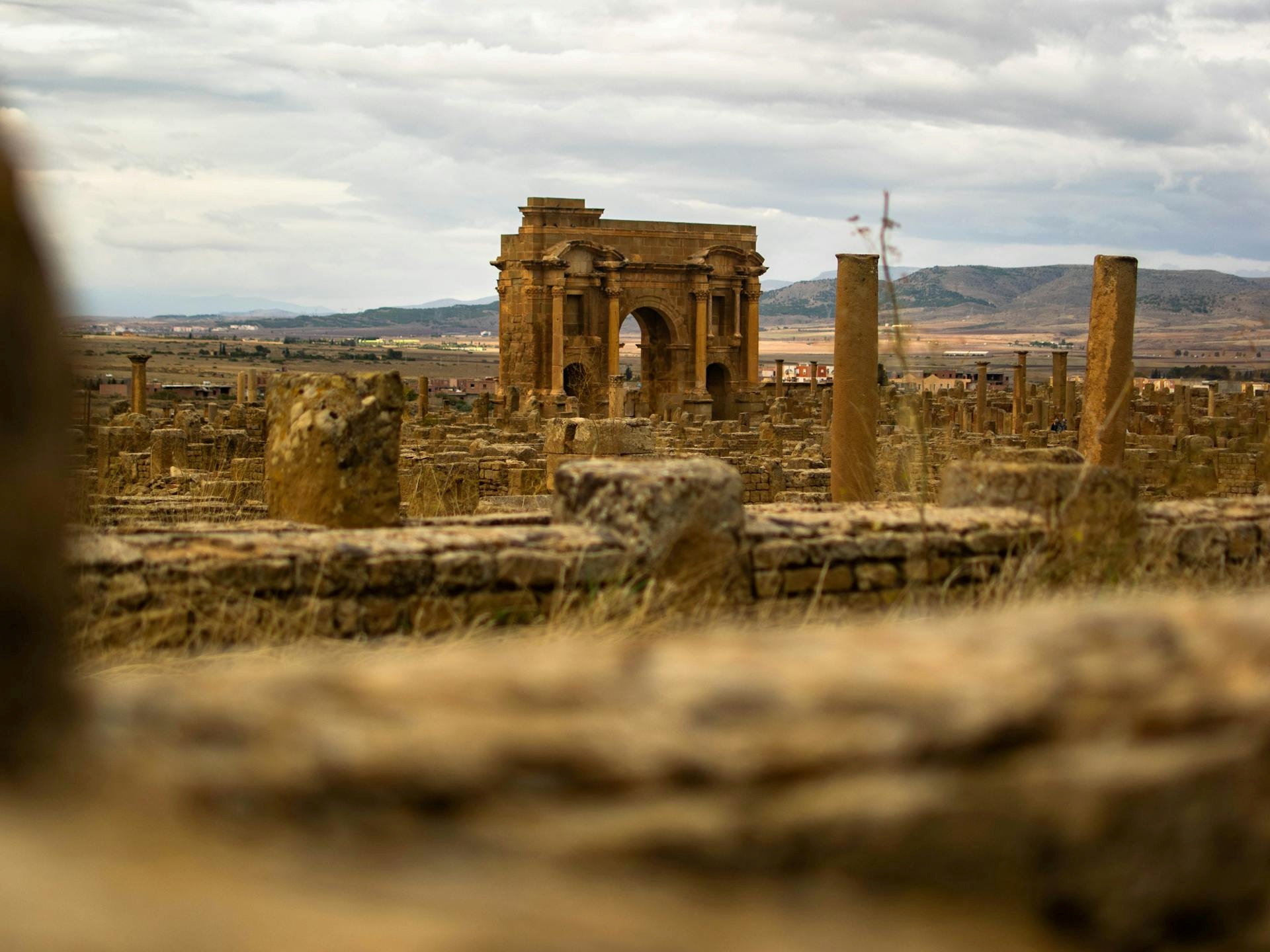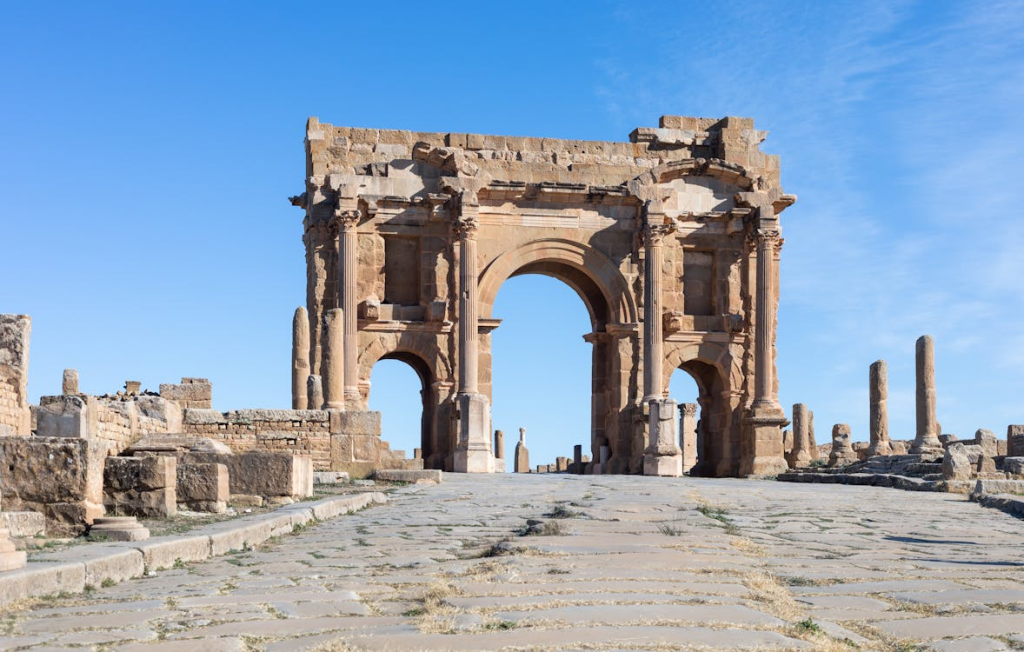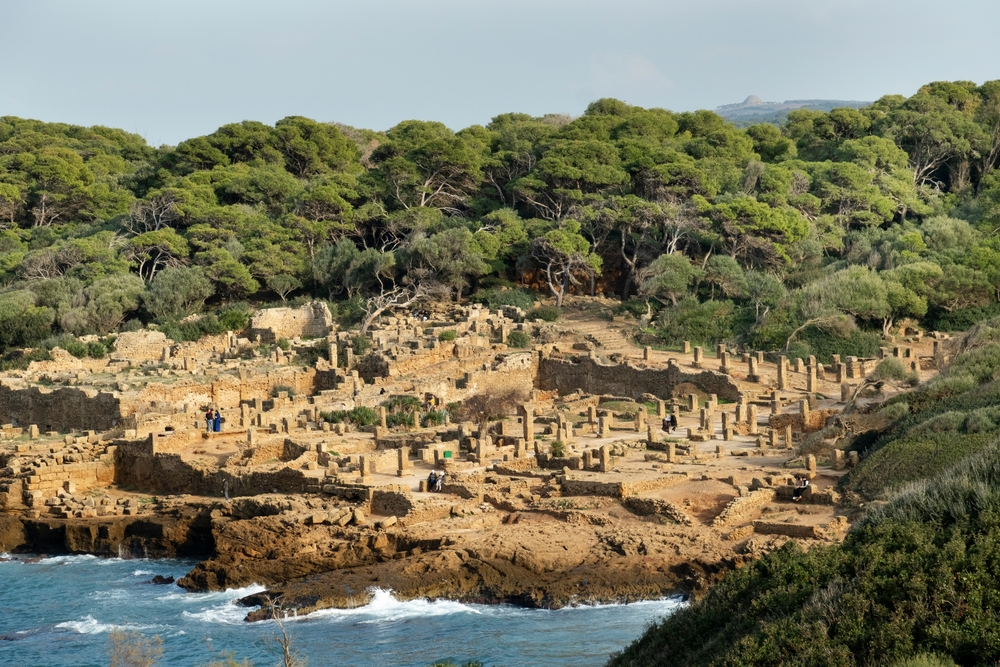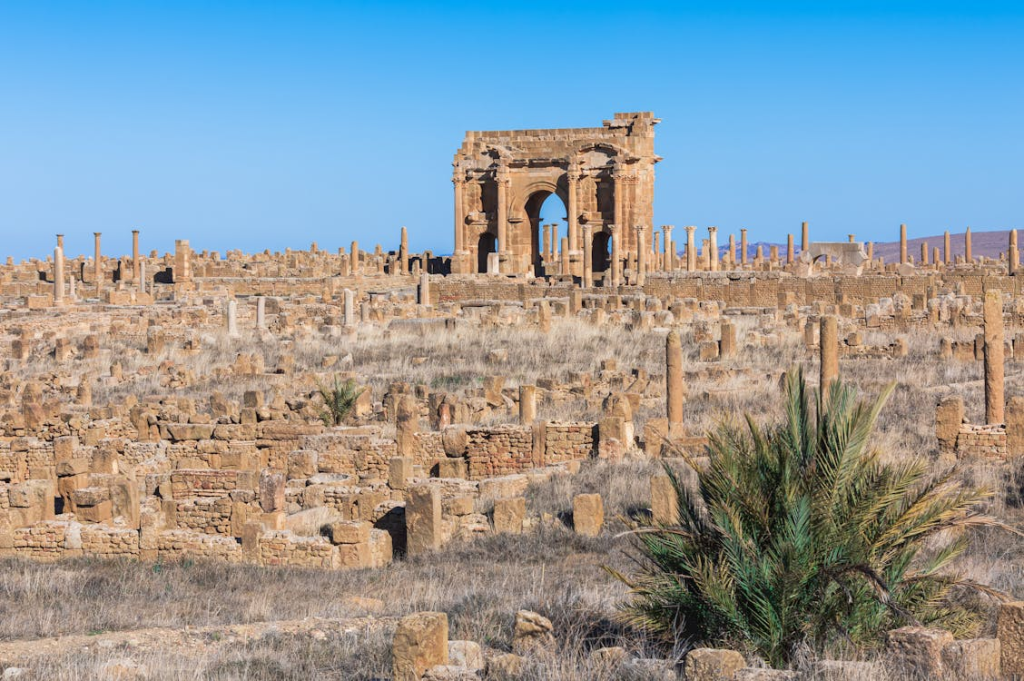Your cart is currently empty!
The Ancient Roman Ruins That Time & Tourists Have Forgotten About

When we think of ancient ruins, Italy and Greece often come to mind. But tucked away in North Africa, Algeria holds some of the most captivating Roman relics that few travelers know about. While the well-trodden ruins of Europe are crowded with tourists, Algeria’s ancient cities remain quiet and largely undisturbed—making them perfect for those seeking a deeper connection with history and spirituality.
These ruins aren’t just crumbling stones from a forgotten era. They tell stories of resilience, cultural blending, and spiritual values that still resonate today. Walking through the deserted streets of Timgad or standing in the shadow of Tipaza’s temples isn’t just about admiring the architecture—it’s about feeling the energy of a civilization that once thrived here. It’s a chance to reflect on the connections between the past and our own lives, and perhaps gain a new perspective on the enduring spirit that shaped these places.
Timgad: Where Roman Soldiers Built a Home in the Desert

Nestled in the Aurés Mountains, Timgad was once a thriving Roman city, built by Emperor Trajan in 100 AD. Though now mostly in ruins, its ancient stone walls and near-perfect street grid still whisper stories of a time when Timgad served both as a military base and a place of refuge for Roman citizens. It was designed as an incentive for locals who served in the Roman army for over 25 years, offering them a home in this distant corner of the empire.
At its peak, over 10,000 people lived here, all sharing a remarkably uniform lifestyle. The homes in Timgad were nearly identical in size, a clear reflection of the Roman ideals of equality—at least among citizens. This notion of balance and order, woven into the very streets of Timgad, speaks to the Roman belief in harmony within society, a value that resonates spiritually as much as it did practically.
While Timgad was undoubtedly a military outpost, it also had a softer, more cultured side. The city boasted a library, public baths, markets, and an impressive amphitheater that could seat 3,500 people. Walking through these spaces today, it’s easy to imagine the vibrancy of life that once filled these streets—where soldiers, merchants, and scholars mingled. This mix of military precision and cultural richness gives Timgad an aura of duality, a place where both the body and the mind were nurtured, making it more than just a relic of Roman expansion.
Tipaza: A Cultural Crossroad by the Sea

While Timgad stood as a symbol of Roman military precision, Tipaza tells a different story—a story of cultural blending and spiritual diversity. Perched on three small hills overlooking the Mediterranean Sea, Tipaza was originally a Phoenician trading post before the Romans transformed it into a bustling colony. Over time, the city became an extraordinary fusion of Phoenician, Roman, early Christian, and Byzantine influences, each culture leaving its own unique mark.
What makes Tipaza stand out is its role as both a commercial hub and a spiritual center. The Romans weren’t just about conquest here; they allowed religious freedom, leading to a blend of beliefs and practices that flourished in this city by the sea. In fact, Tipaza was home to three major basilicas, showcasing how central faith had become to daily life in the region. Even today, as you wander through the ruins, the energy of this spiritual melting pot still lingers in the air.
Walking through Tipaza, you’re not just witnessing ancient ruins—you’re stepping into a place where different cultures and beliefs coexisted. The city’s mix of Phoenician, Roman, and Christian structures serves as a powerful reminder of how diverse influences can come together, creating something greater than the sum of its parts. It’s a place that invites reflection on the beauty of cultural diversity and the spiritual legacies that outlast even the grandest empires.
A City Built on Equality and Community
One of the most intriguing aspects of Timgad is how its architecture reflects the Roman ideals of equality and fairness. Unlike many Roman cities where wealth and status were displayed through lavish homes, Timgad’s residential areas tell a different story. The homes of its citizens, regardless of status or background, were remarkably uniform in size and layout. This design choice speaks volumes about the social fabric of the city, where all Roman citizens who served in the military were granted equal standing—at least in their living quarters.
This equality wasn’t just about housing. Timgad’s infrastructure supported a balanced way of life, with public spaces like the amphitheater, baths, and markets serving as gathering points where all citizens could come together. It’s a reminder that the Romans, despite their hierarchical society, built certain colonies with an emphasis on unity and shared experience. The simple yet profound equality embedded in Timgad’s streets and homes continues to inspire reflection on what it means to live in a community that values balance and fairness.
Architecture Rooted in Balance
Timgad and Tipaza aren’t just architectural feats—they reflect deeper values of balance and community. Timgad’s grid layout, with its perfect symmetry, symbolized the Roman belief in order and equality, where every street and building had its place in the grand design. It’s a city built not just for function, but to inspire a sense of harmony among its residents.
Tipaza, on the other hand, blends its architecture with nature. Built on hills overlooking the Mediterranean, its layout embraced the landscape, creating a connection between the city and the sea. The Romans in Tipaza didn’t just construct buildings; they integrated the environment into the city’s very fabric, merging functionality with a respect for the natural world.
Both cities stand as reminders that thoughtful design can go beyond utility—it can shape how people live and connect, even centuries later.
Lessons in Resilience from Algeria’s Ancient Ruins

Timgad and Tipaza have witnessed the rise and fall of empires, withstood the chaos of invasions, and faced centuries of wear and tear. Yet, they remain—standing as quiet symbols of endurance. Walking through these ancient streets, you can almost feel the weight of history around you. There’s something deeply powerful in knowing that despite everything, these places are still here.
These ruins remind us that survival isn’t always about being untouched by hardship. It’s about continuing to stand even when the world around you changes beyond recognition. Much like these cities, we too face moments in life that test our strength. But there’s always something left that refuses to break.
Timgad and Tipaza may no longer be bustling cities, but their legacy is far from forgotten. They teach us that resilience isn’t just about enduring the hard times—it’s about finding the strength to rise again, even when it seems impossible. And in that, they continue to inspire us today.
